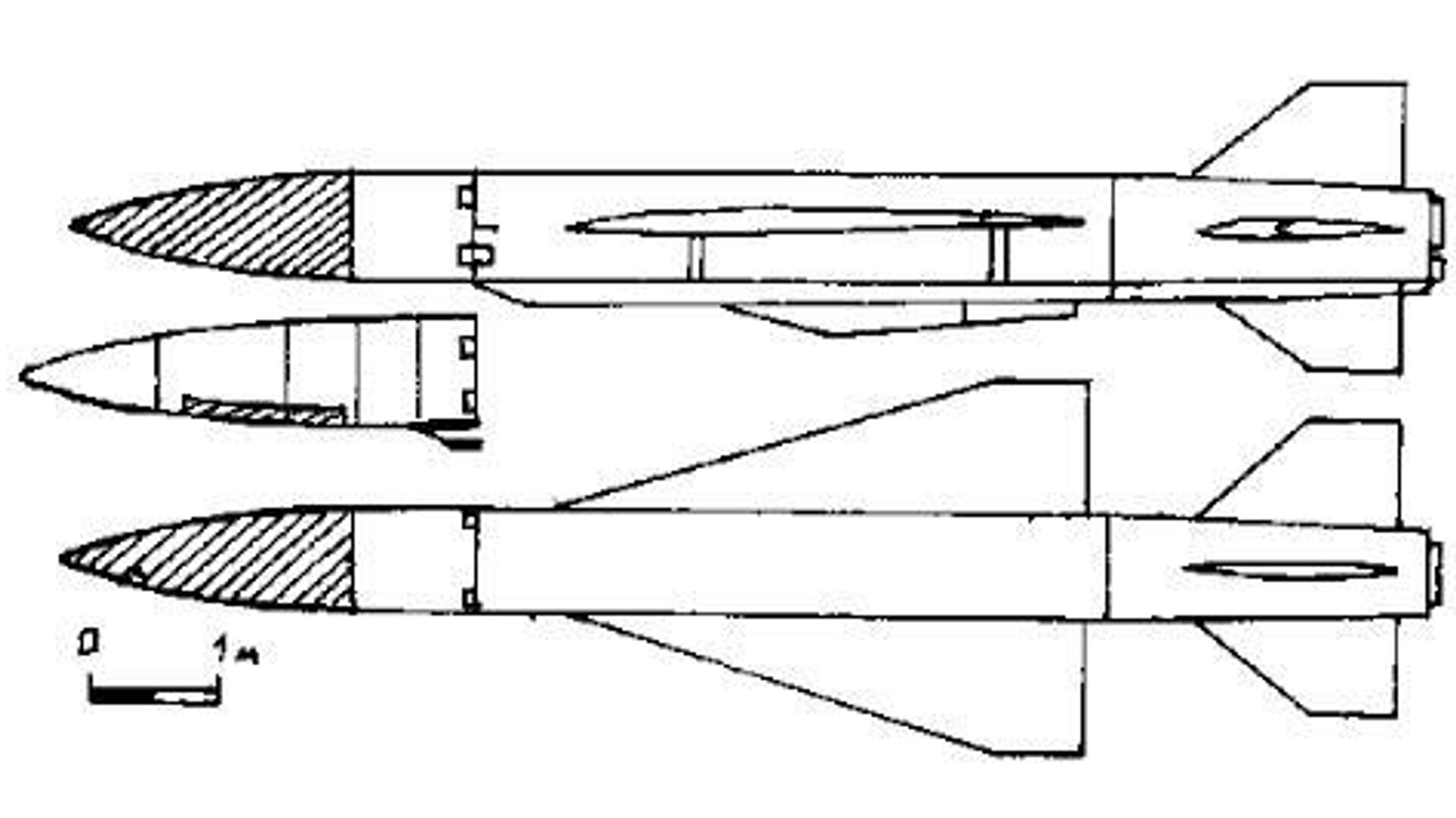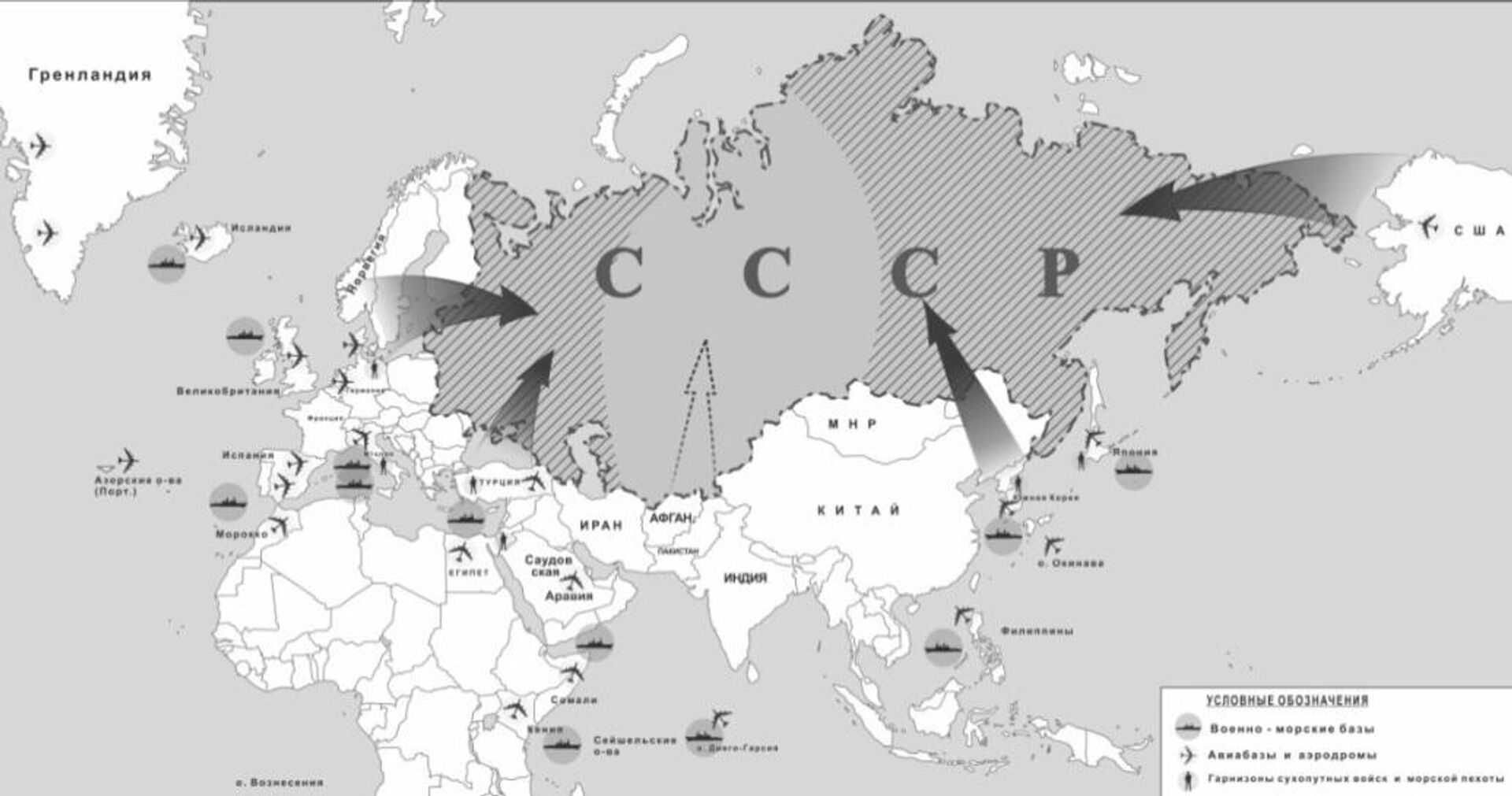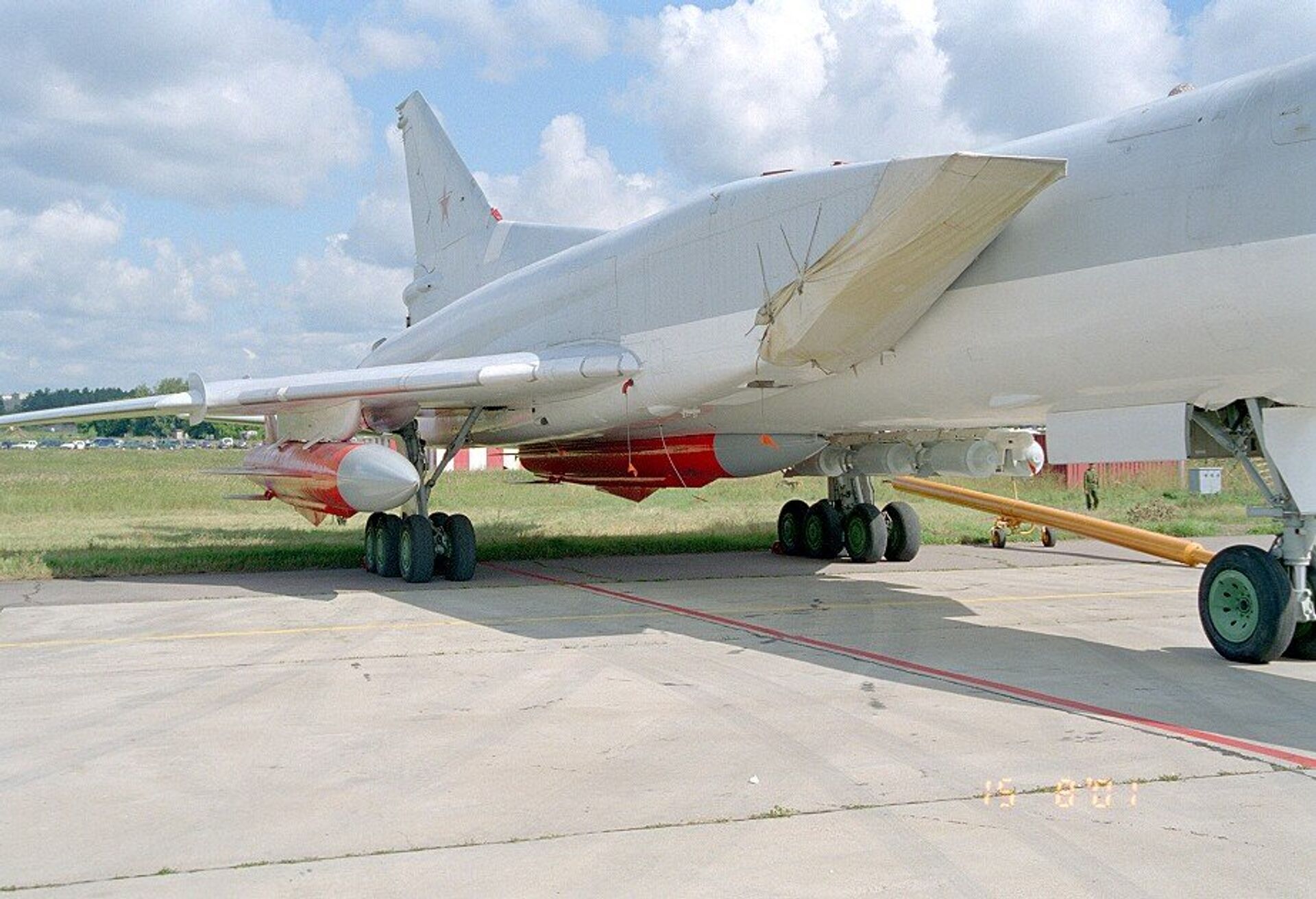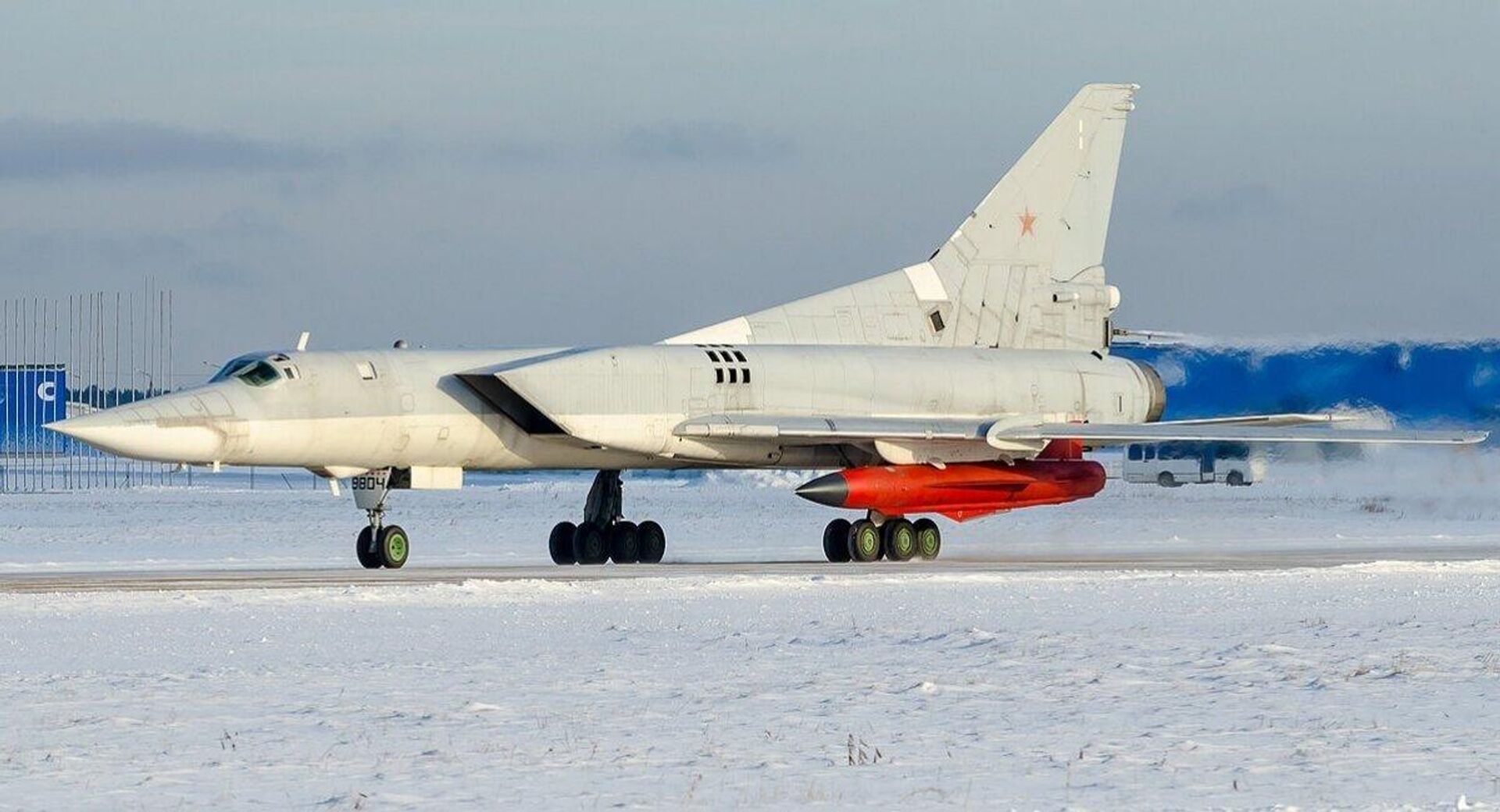https://sputnikglobe.com/20231230/kh-22-russias-unstoppable-cruise-missile-1115894023.html
Kh-22: Russia’s Unstoppable Cruise Missile
Kh-22: Russia’s Unstoppable Cruise Missile
Sputnik International
Russia launched its largest-ever drone and missile barrage against Ukraine since the start of the conflict on Friday, with the MoD reporting the targeting of energy facilities, ammunition depots, airfields, ports, fuel terminals and regional military headquarters. Among the weapons used were Kh-22 cruise missiles. Here’s what we know about them.
2023-12-30T16:05+0000
2023-12-30T16:05+0000
2023-12-30T16:43+0000
military
military & intelligence
ukraine
russia
almaz-antey
nato
s-200
kh-32
tu-22m
ussr
https://cdn1.img.sputnikglobe.com/img/07e7/0c/1e/1115893867_14:0:487:266_1920x0_80_0_0_2c4bd6039e6cd702296d0c9de7fab628.jpg
Just hours after Friday’s massed missile and drone attack, Ukrainian Armed Forces Air Force Command advisor Yuri Ignat admitted to media that Ukraine’s NATO-sourced air defenses were no match for Russia’s Kh-22 series of air-to-surface cruise missiles.“No,” Ignat said, when asked whether the air defense forces were able to shoot down even a single Kh-22 series, either Friday or over the 22 month period before that. “They have not been shot down. The enemy is using them in the southern and eastern direction, and from the north, attacking Kharkov region.”Ignat’s admission, on a par in significance to Commander-in-Chief Valery Zaluzhny’s acknowledgement in November that there would be “no deep and beautiful breakthrough” in Ukraine’s counteroffensive, was matched in its pessimistic tone by Western observers, who complained that the Kh-22’s Tu-22M3 strategic bomber carriers were essentially impervious to Ukraine’s air defenses, because they fire at standoff ranges too great for air defenses to counter.“Big, lumbering Russian bombers flying at high altitude would be ideal targets for Ukrainian S-200s if the Russians flew close enough to the Ukrainian border to inch inside the S-200’s 200-or-so-mile [320 km, ed.] range,” Forbes military observer David Axe wrote – referencing the 1960s-vintage air and missile defense system built by the thousands during the Soviet era. “The problem, for Ukrainian air defense commanders, is that all Russian bombers fire cruise missiles that can range much farther than 200 miles. The Tu-22M3’s own standard land-attack missile, the Kh-22/32, ranges farther than 500 miles [805 km, ed.]. An S-200 battery would need to be well forward of a Tu-22M3’s target city –as in, hundreds of miles – in order to get a clean shot at the bomber,” he added.And that’s no accident.Soviet Standoff WeaponOver 60 years ago, the Soviet General Staff had a problem: Encirclement by a series of hostile US-coordinated alliances, including NATO in the west, CENTO in the Middle East, and SEATO in Asia. All of these blocs had only one goal: to target the USSR and China at Washington’s behest if the Cold War ever went hot. Complementing hundreds of military bases was America’s powerful fleet of aircraft carriers, including the then-brand new nuclear-powered Enterprise-class supercarriers, which could be deployed at a moment’s notice to potential flashpoints anywhere in the world against Moscow or its allies.In 1958, the Soviet military tasked the legendary Raduga Design Bureau outside Moscow, known for its creation of a variety of cruise and hypersonic missile designs, with the development of ‘Product D-2’, a long-range supersonic anti-ship cruise missile to target carriers using conventional munitions, or entire strike groups if fitted with a nuclear warhead. And so the Kh-22 Burya (lit. ‘Storm’) was born.Development was led by legendary Soviet aircraft and rocket designer Alexander Bereznyak, who created more than a dozen rocket engines, hypersonic and cruise missile designs and space program-related aircraft technologies during his career. Design Bureau 1, now part of Almaz-Antey, developed three separate guidance systems for the Kh-22 series of missiles, including inertial, active and passive radar-based seekers.The missile’s blazing fast flight speed, between Mach 3.5 to Mach 4.6 (just shy of Mach 5, which is deemed hypersonic), was achieved thanks to the use of a powerful, liquid-propellant fueled rocket engine. The missile could ascend to altitudes of up to 25 km (and up to 35 km in its Raduga-D2 hypersonic flying laboratory variant), and had a range of up to 600 km, making the system essentially impervious to any existing air and missile defenses of the time.Prototype production of the Kh-22 began in 1962, with development work continuing as the missile was tested aboard strategic missile carriers – including the then-brand new supersonic, variable-sweep winged Tupolev Tu-22 strategic/maritime strike bomber. The Kh-22 was officially adopted into service with the Soviet military in February 1971.The Kh-22 featured a number of design innovations for the time, including a complex, radio-electronic warfare-resistant radio unit, an alcohol-cooled guidance system, onboard autopilot computer, hydraulic rudders, and a warhead equipped with a special safety system designed to prevent accidental discharge (especially crucial for the missile’s 0.35-1 megaton variants – designed to sink entire carrier strike groups).The missile could be launched from a variety of Soviet strategic bomber aircraft, from the veteran, 1950s vintage turboprop Tupolev Tu-95 to the Tu-16 and Tu-22, to the extensively redesigned Tu-22M and its M1, M2 and M3 variants.Deep ModernizationBetween the time it was adopted and the present, well over half-a-dozen variants of the Kh-22 were developed – upgrading flight speed, range, guidance systems, and other characteristics. In the late 1980s, the Raduga Design Bureau set to work on a deep modernization of the Kh-22 to account for NATO’s improved electronic warfare capabilities.The Kh-32’s development proved slow and painful, with the economic crisis following the Soviet collapse slowing development to a crawl, and contracts to resume development signed in 2008 and 2010, respectively, as part of the program to modernize the Tu-22M platform. The Kh-32 was formally adopted into service with the Russian military in 2016.Although continued to be classed as an anti-ship missile through the late 2010s, it became clear to Russia’s military that the Kh-22 and its Kh-32 variant could be used for land attack missions, with their deployment in Ukraine during the special military operation proving the point.Who Has Kh-22s?Iraq was the only country besides the USSR which Moscow allowed Kh-22 missiles to be exported to – with about two dozen reportedly sent to Baghdad in the 1980s during the Iran-Iraq War. After 1991 and the Soviet Union’s collapse, Kh-22s were divided among Russia, Belarus, Ukraine and Kazakhstan.Kiev scrapped over 400 of its Kh-22s in the early 2000s as part of a US-sponsored program to decommission and scrap its Tu-22M fleet known as the Cooperative Threat Reduction program.With an estimated price tag of between $400,000 and $1 million apiece, the Kh-22 and Kh-32, used in coordination with other missiles, as well as kamikaze drones, have proven impossible to stop not only by Ukraine’s legacy Soviet-era air and missile defenses, but by advanced NATO hardware, including Patriot, NASAMS and Iris-T missile batteries, brought in over the course of the Western bloc’s proxy war against Russia.Characterizing the missiles as a “final echelon” weapon, Matviychuk explained that they are designed to approach their targets after drones and Kalibr cruise missiles have suppressed Ukrainian air defenses.
ukraine
russia
ussr
soviet union
Sputnik International
feedback@sputniknews.com
+74956456601
MIA „Rossiya Segodnya“
2023
News
en_EN
Sputnik International
feedback@sputniknews.com
+74956456601
MIA „Rossiya Segodnya“
Sputnik International
feedback@sputniknews.com
+74956456601
MIA „Rossiya Segodnya“
what is the kh-22 missile, what is the kh-32 missile
what is the kh-22 missile, what is the kh-32 missile
Kh-22: Russia’s Unstoppable Cruise Missile
16:05 GMT 30.12.2023 (Updated: 16:43 GMT 30.12.2023) Russia launched its largest-ever drone and missile barrage against Ukraine since the start of the conflict on Friday, with the MoD reporting the targeting of energy facilities, ammunition depots, airfields, ports, fuel terminals and regional military headquarters. Among the weapons used were Kh-22 cruise missiles. Here’s what is known about them.
Just hours after Friday’s massed missile and drone attack, Ukrainian Armed Forces Air Force Command advisor Yuri Ignat
admitted to media that Ukraine’s NATO-sourced air defenses were no match for Russia’s Kh-22 series of air-to-surface cruise missiles.
“No,” Ignat said, when asked whether the air defense forces were able to shoot down even a single Kh-22 series, either Friday or over the 22 month period before that. “They have not been shot down. The enemy is using them in the southern and eastern direction, and from the north, attacking Kharkov region.”
“The Kh-22 missile files at a speed of 4,000 km per hour and approaches its target mostly along a ballistic trajectory, so special means are needed to intercept it. Air defense systems like the Patriot are needed, so it’s difficult with these missiles. The enemy has used more than 300 of these missiles since the start of the full-scale invasion. Along with the Kh-22, they also have a modernized version of this missile – the Kh-32,” Ignat added. “It’s presumed that such missiles were also used today. Their characteristics have been slightly improved. But there are fewer of them than the Kh-22,” he said.
Ignat’s admission, on a par in significance to Commander-in-Chief Valery Zaluzhny’s acknowledgement in November that there would be “no deep and beautiful breakthrough” in Ukraine’s counteroffensive, was matched in its pessimistic tone by Western observers, who complained that the Kh-22’s Tu-22M3 strategic bomber carriers were essentially impervious to Ukraine’s air defenses, because they fire at standoff ranges too great for air defenses to counter.
“Big, lumbering Russian bombers flying at high altitude would be ideal targets for Ukrainian S-200s if the Russians flew close enough to the Ukrainian border to inch inside the S-200’s 200-or-so-mile [320 km, ed.] range,” Forbes military observer David Axe
wrote – referencing the 1960s-vintage air and missile defense system built by the thousands during the Soviet era. “The problem, for Ukrainian air defense commanders, is that all Russian bombers fire cruise missiles that can range much farther than 200 miles. The Tu-22M3’s own standard land-attack missile, the Kh-22/32, ranges farther than 500 miles [805 km, ed.]. An S-200 battery would need to be well forward of a Tu-22M3’s target city –as in, hundreds of miles – in order to get a clean shot at the bomber,” he added.
Over 60 years ago, the Soviet General Staff had a problem: Encirclement by a series of hostile US-coordinated alliances, including NATO in the west, CENTO in the Middle East, and SEATO in Asia. All of these blocs had only one goal: to target the USSR and China at Washington’s behest if the Cold War ever went hot. Complementing hundreds of military bases was America’s powerful fleet of aircraft carriers, including the then-brand new nuclear-powered Enterprise-class supercarriers, which could be deployed at a moment’s notice to potential flashpoints anywhere in the world against Moscow or its allies.
In 1958, the Soviet military tasked the
legendary Raduga Design Bureau outside Moscow, known for its creation of a variety of cruise and hypersonic missile designs, with the development of ‘Product D-2’, a long-range supersonic anti-ship cruise missile to target carriers using conventional munitions, or entire strike groups if fitted with a nuclear warhead. And so the Kh-22 Burya (lit. ‘Storm’) was born.
Development was led by legendary Soviet aircraft and rocket designer Alexander Bereznyak, who created more than a dozen rocket engines, hypersonic and cruise missile designs and space program-related aircraft technologies during his career. Design Bureau 1, now part of Almaz-Antey, developed three separate guidance systems for the Kh-22 series of missiles, including inertial, active and passive radar-based seekers.
The missile’s blazing fast flight speed, between Mach 3.5 to Mach 4.6 (just shy of Mach 5, which is deemed hypersonic), was achieved thanks to the use of a powerful, liquid-propellant fueled rocket engine. The missile could ascend to altitudes of up to 25 km (and up to 35 km in its Raduga-D2 hypersonic flying laboratory variant), and had a range of up to 600 km, making the system essentially impervious to any existing air and missile defenses of the time.
The 11.6 meter long, 0.94 meter diameter missile had a launch mass of over 5,780 kg, and a high explosive cumulative payload of 960 kg, sufficient to paralyze any enemy warship. To complicate interception, the missile was designed to climb higher and higher into the air during flight as it burned through its fuel, and to dive onto its target at a 30-degree angle.
Prototype production of the Kh-22 began in 1962, with development work continuing as the missile was tested aboard strategic missile carriers – including the then-brand new supersonic, variable-sweep winged Tupolev Tu-22 strategic/maritime strike bomber. The Kh-22 was officially adopted into service with the Soviet military in February 1971.
The Kh-22 featured a number of design innovations for the time, including a complex, radio-electronic warfare-resistant radio unit, an alcohol-cooled guidance system, onboard autopilot computer, hydraulic rudders, and a warhead equipped with a special safety system designed to prevent accidental discharge (especially crucial for the missile’s 0.35-1 megaton variants – designed to sink entire carrier strike groups).
The missile could be launched from a variety of Soviet strategic bomber aircraft, from the veteran, 1950s vintage turboprop Tupolev Tu-95 to the Tu-16 and Tu-22, to the extensively redesigned Tu-22M and its M1, M2 and M3 variants.
Between the time it was adopted and the present, well over half-a-dozen variants of the Kh-22 were developed – upgrading flight speed, range, guidance systems, and other characteristics. In the late 1980s, the Raduga Design Bureau set to work on a deep modernization of the Kh-22 to account for NATO’s improved electronic warfare capabilities.
That project, known as the Kh-32, featured a new, more powerful engine which increased the missile’s range to 1,000 km, a new jamming-resistant inertial guidance system with radio correction and higher accuracy terrain reference-based guidance, and a new automatic control system. With its flight ceiling increased to up to 40 km, the Kh-32 became impervious to even the most advanced Aegis naval missile defenses, with its top speed nearly double that of the SM-6, the Aegis’s anti-missile missile. The tradeoff is a lower payload, with the Kh-32 equipped with a 500 kg warhead in place of the Kh-22’s 960 kg warhead.
The Kh-32’s development proved slow and painful, with the economic crisis following the Soviet collapse slowing development to a crawl, and contracts to resume development signed in 2008 and 2010, respectively, as part of the program to modernize the Tu-22M platform. The Kh-32 was formally adopted into service with the Russian military in 2016.
Although
continued to be classed as an anti-ship missile through the late 2010s, it became clear to Russia’s military that the Kh-22 and its Kh-32 variant could be used for land attack missions, with their deployment in Ukraine during the special military operation proving the point.
Iraq was the only country besides the USSR which Moscow allowed Kh-22 missiles to be exported to – with about two dozen
reportedly sent to Baghdad in the 1980s during the Iran-Iraq War. After 1991 and the Soviet Union’s collapse, Kh-22s were divided among Russia, Belarus, Ukraine and Kazakhstan.
Kiev scrapped over 400 of its Kh-22s in the early 2000s as part of a US-sponsored program to decommission and scrap its Tu-22M fleet known as the Cooperative Threat Reduction program.
With an estimated price tag of between
$400,000 and
$1 million apiece, the Kh-22 and Kh-32, used in coordination with other missiles, as well as kamikaze drones, have proven impossible to stop not only by Ukraine’s legacy Soviet-era air and missile defenses, but by advanced NATO hardware, including Patriot, NASAMS and Iris-T missile batteries, brought in over the course of the Western bloc’s proxy war against Russia.
“These are missiles for destroying protected fortifications, dugouts, command posts deep underground, launch positions of missile forces, airfields, storage facilities, that is, for destroying elements of military infrastructure,” veteran Russian military expert Anatoliy Matviychuk
said of the Kh-22/Kh-32s’ use following Friday’s strikes.
Characterizing the missiles as a “final echelon” weapon, Matviychuk explained that they are designed to approach their targets after drones and Kalibr cruise missiles have suppressed Ukrainian air defenses.







